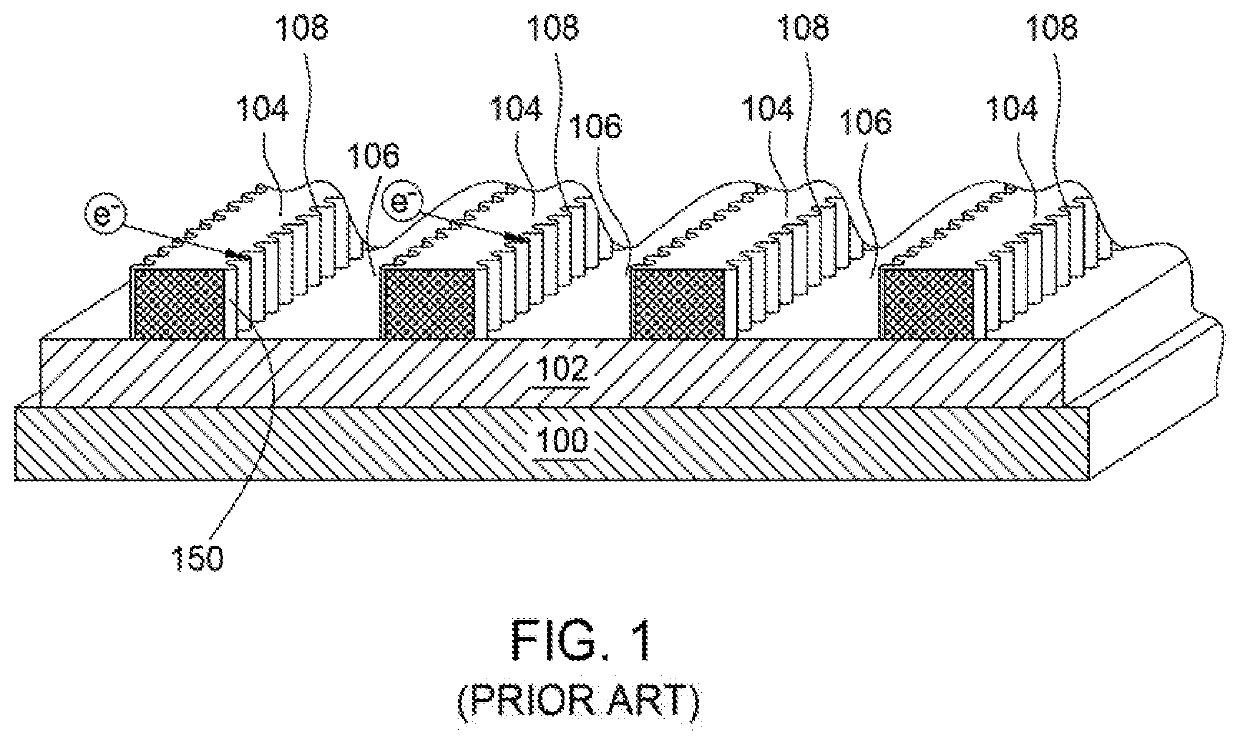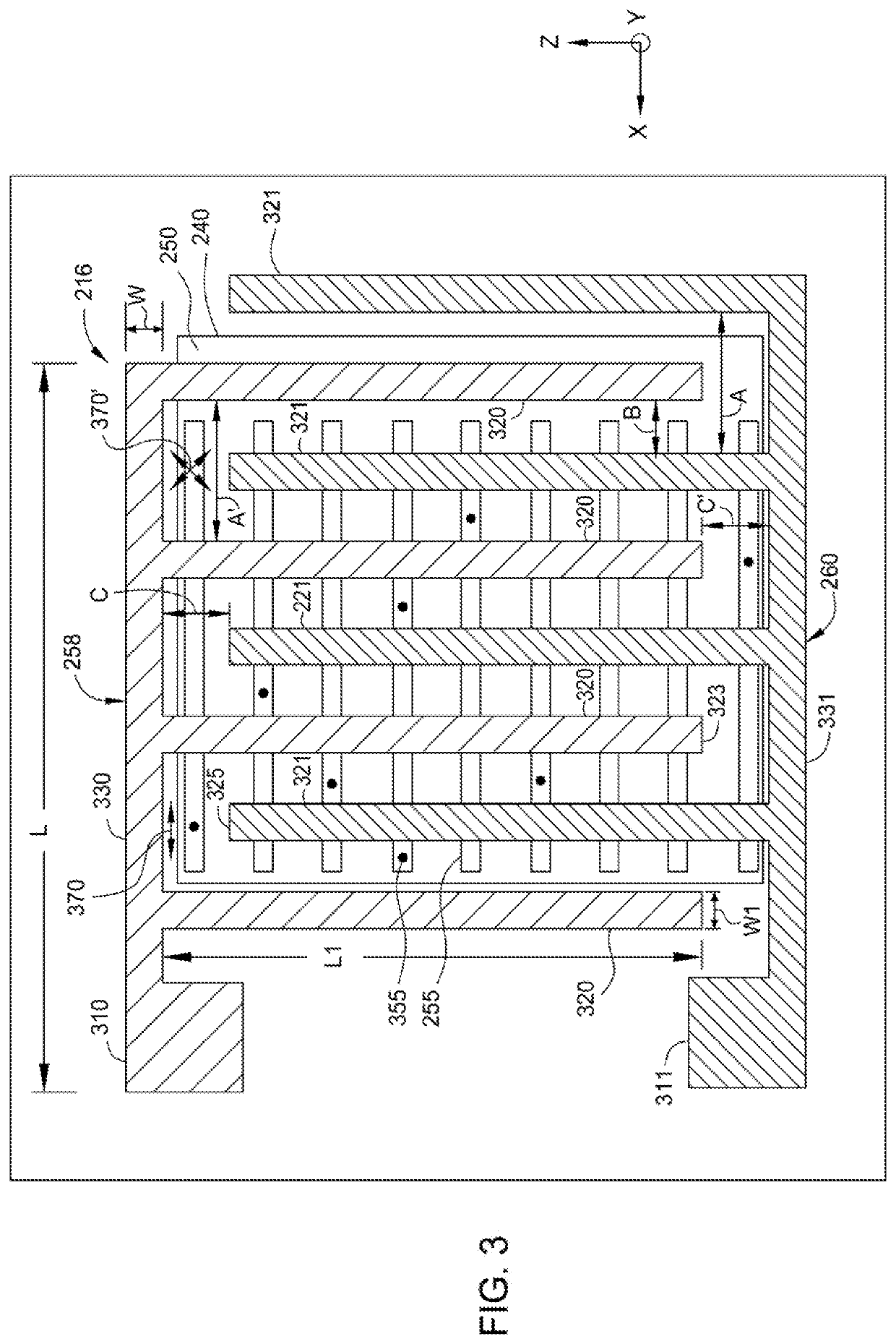Photoresist patterning process
- Summary
- Abstract
- Description
- Claims
- Application Information
AI Technical Summary
Benefits of technology
Problems solved by technology
Method used
Image
Examples
Embodiment Construction
[0020]Methods for enhancing profile control of a photoresist layer formed by photolithography are provided. The diffusion of one or more of ions, electrons, charged particles and acid, generically referred to as drift species, generated by a photoacid generator during pre-exposure and / or a post-exposure bake procedure may be drifted to the nearby or underlying materials or layers so as to assist efficiently transferring features into a target layer. Electric field application controls the diffusion and distribution of the acids and / or other drift species generated by the photoacid generator in the photoresist layer, thus, efficiently altering the film properties to the nearby layers. The altered film properties of the nearby layers may serve as a hardmask layer to assist transferring features into the desired target layer. Suitable process parameters controlled during the pre- and / or post-exposure bake process for the electric field generation includes voltage level as well as the s...
PUM
 Login to View More
Login to View More Abstract
Description
Claims
Application Information
 Login to View More
Login to View More - R&D
- Intellectual Property
- Life Sciences
- Materials
- Tech Scout
- Unparalleled Data Quality
- Higher Quality Content
- 60% Fewer Hallucinations
Browse by: Latest US Patents, China's latest patents, Technical Efficacy Thesaurus, Application Domain, Technology Topic, Popular Technical Reports.
© 2025 PatSnap. All rights reserved.Legal|Privacy policy|Modern Slavery Act Transparency Statement|Sitemap|About US| Contact US: help@patsnap.com



